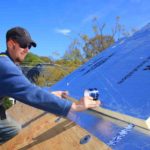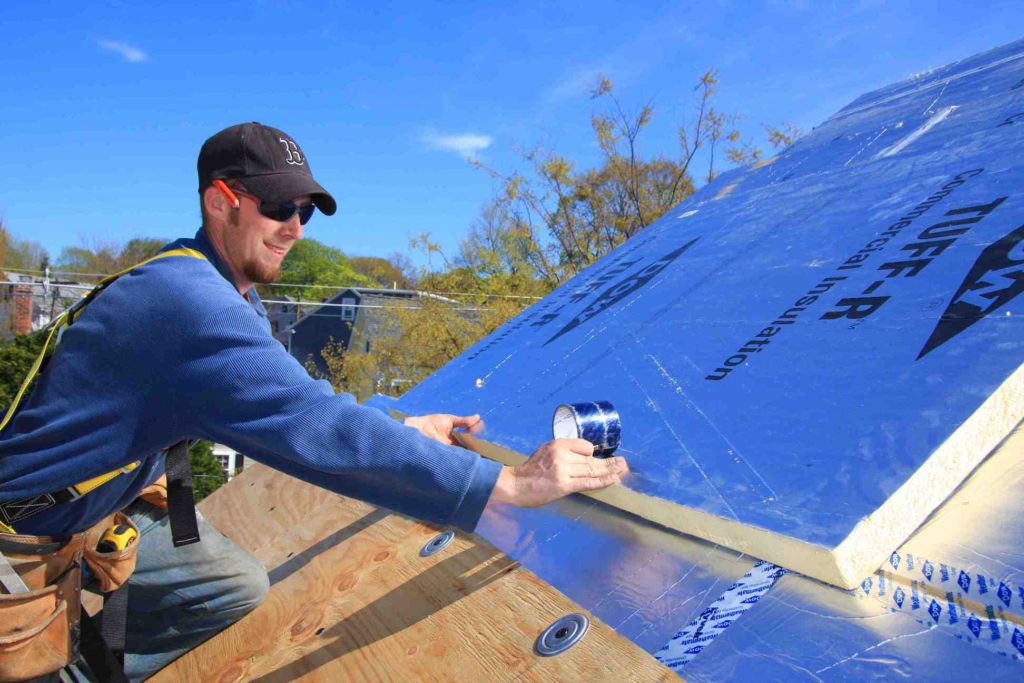
By Will Browsberger
A little over 10 years ago, my wife and I proposed to my parents that we downsize into a two-family house together and make it as energy efficient as possible. (See “Deep Energy Retrofit Shrinks Utility Bills,” Belmont Citizens Forum Newsletter, September 2010.) This is a story of four experiments.
First, the living arrangement has worked out very well for all of us—we can be helpful in little ways to my parents and we feel very fortunate to see them more. Our only wish is that we had made the decision when the kids were younger.
Second, the decision worked out well financially. At the time, our first daughter was a college sophomore and we were staring at a long stretch of college payments for two more. Even with a substantial investment in energy efficiency, we were able to cut and stabilize our costs and squeeze through the college cost tunnel.
Third and fourth, the decision has worked out reasonably well environmentally. There were two environmental experiments: how much could we cut our carbon footprint and how well could we sustain the cuts.
We were lucky to find a two-family for sale in Belmont that had “good bones” but was in rough shape, a perfect target for a deep energy retrofit. We set out to find a builder who was experienced with the emerging techniques for reducing home energy consumption and could give us informed advice on our options. We were fortunate to end up working with Paul Eldrenkamp and Cador Price Jones of Byggmeister Construction.

David Legg of Synergy Construction works on the Brownsburger roof in 2010. Source: Will Brownsburger
Working with Paul and Cador and their team, we conceptualized a project that would cut energy use to the lowest possible level for the preexisting house, improve the living space, and fix everything broken about the house (which meant replacing all the basic systems).
The biggest cost element was a full reconstruction of the envelope of the house to maximize insulation. The team pumped cellulose into the walls and attic ceiling. Then they ripped off the siding and the shingles and buzzed off all the exterior architectural detailing to simplify the geometry of the structure. They wrapped the house in four inches of foam paneling, with six inches on the roof.
For a week or two, the house looked like a giant refrigerator, with a tin foil outer layer and no windows or doors. Then the team cut in the windows and doors and went about installing new siding and insulated doors and windows.
By far, the insulation is the part of the project that made the most difference in our energy consumption. We didn’t have prior consumption data, but our modeling suggested that the insulation reduced the heating needs for the structure by 80% to 90%.
That made the choice of heating source less critical. The heating system we chose was two small, high-efficiency gas burners, one for each apartment. At that point in time, our analysis indicated that fuel pumps were not actually better in terms of their net carbon emissions, including energy generation. The fuel pumps are better now and the grid is somewhat greener. We are waiting for the right moment to make the upgrade.
The project included an energy recovery ventilator to reduce the energy loss associated with bringing in fresh air. We also included solar hot water and solar photovoltaic panels for electricity generation.
Our modeling indicated that the blown-in insulation had a relatively short five-year pay-back period. However, the outer layer of foam only made a modest additional improvement in insulation value but accounted for most of the cost. We estimated a 92-year payback for that portion of the investment. The economics depend heavily on fuel pricing. Natural gas prices have trended down over the past decade, so that our actual payback period will be longer.
The envelope investment does pay back in other ways. We will not need to paint for decades and the wood structure of the house is very well protected from moisture and insects.
During the first year or two of occupancy, we continued to tune our use down—using the most efficient lighting, shower timers, and low-flow shower heads. We monitored and attempted to optimize power consumption by our various electrical devices and generally stayed conscious of our energy use.
We also tracked our total energy use carefully to measure the success of the project. The state’s secretary of environmental affairs used the data we generated to develop standards for deep-energy retrofits.
Total annual purchased energy per household in terms of kWh
|
Pre project – average of two single-family homes |
58,724 kWh |
|
immediately post-project (9/2011-8/2012), average of two apartments |
5,522 kWh |
|
10 years after project (9/2019-8/2020), average of two apartments |
10,211 kWh |
|
New England average household site energy (2015) |
28,516 kWh |
|
Approximate annual contribution of solar PV panels, netted out of per-apartment averages |
6,000 kWh |
Our two households were initially able to hold our combined annual net energy use to only 11,000 kilowatt hours (counting both gas and electric in kilowatt energy units and netting out solar heat and power generated on site). That is about 20% of the average per household use in New England.
In 2012, we were the first house in Massachusetts and the sixth in North America to meet the standards of the “Thousand Home Challenge.” The project was featured on the cover of Home Energy Magazine in January 2013.
The final experiment was to just live in the house without constantly thinking about energy. The temperature in the house is stable both in winter and in summer and there are no drafts except when we want to open the windows. The house is also quiet. With windows closed, we do not notice much outside noise.
As we stopped thinking about energy use, our behavior did change. The thermostat got warmer in the winter and cooler in the summer. The showers got longer. The writing of this piece was a good occasion to check in on how our less-mindful energy use has drifted up. The numbers below summarize the results of our two environmental experiments.
Two-family living is a great choice from a personal and financial perspective. A deep-energy retrofit makes for a very liveable home and does save a lot of energy, although it is not going to pay for itself in energy use reductions alone. Finally, at least with current technology, the deepest energy reductions require sustained behavior change.
Notes
The “10 years after” period had both more heating degree days and more cooling degree days (5166/939) than the “Immediately post-project” period (4628/703), but this difference is not enough to explain the increase in energy use.
Site energy is from the Energy Information Administration’s survey of residential energy consumption for New England for 2015. It includes site generated energy in the total, whereas we back it out, but since the average home does not have much site energy, this difference does not materially distort the comparison.
Will Brownsberger is the Massachusetts state senator for the Second Suffolk and Middlesex District of Massachusetts.


Sorry, the comment form is closed at this time.